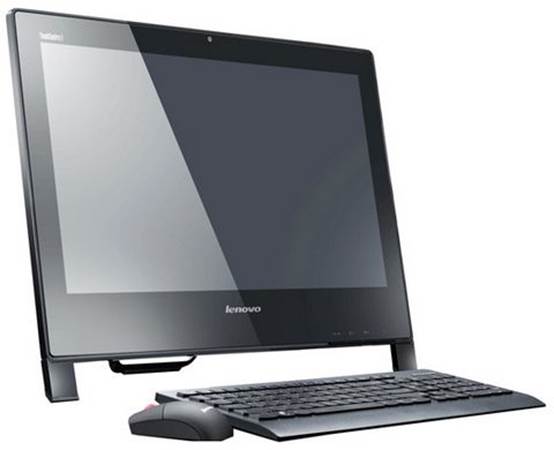Conclusion
All-in-ones have come a long way since
their inception, and continue to evolve to meet consumer demand, perceived or
actual,
Acer's Aspire 5600U is a great example of
the current generation of home, family- focused Windows 8 all-in-ones. It has
an attractive design that carries through to its bundled peripherals, a
reasonable spec, and an excellent stand that allows for a wide tilt range -
highly useful if you're dealing with touch-centric applications or games.

Acer's
Aspire 5600U is a great example of the current generation of home, family-
focused Windows 8 all-in-ones
Lenovo's ThinkCentre Edge 92z is a real
powerhouse, particularly in computing power (as opposed to real-time graphics/
games). It's a workstation through and through, and would make a great desktop-
PC replacement for many knowledge workers. Its screen quality had a couple of
let-downs for us, along with its poor port placement, inclusion of wired
peripherals, and generally lackluster design. It's clear that all-in-ones are a
new area for Lenovo, and there's progress to be made in wrapping that awesome
computing power up in a more practical and attractive shell.
Apple's latest-generation iMac is
beautiful. It's powerful, both computationally and graphically, even though we
didn't test the top-spec model.

Lenovo's
ThinkCentre Edge 92z is a real powerhouse, particularly in computing power (as
opposed to real-time graphics/ games).
It remains a true design and photography
powerhouse, and a home desktop with sufficient power to run modern games at
attractive levels of visual quality (though you may have to dual-boot
Microsoft's Windows 7 or 8 alongside Apple's OS X to do so).
The iMac remains the quintessential
single-piece PC, in that it's certainly the most typical example — though
perhaps not the most perfect. We awarded it four stars, a half-star lower than
the Dell XPS One 27 we reviewed in February. Why? The iMac places form over
function in its placement of connectors, and its included accessories.
The XPS One 27 offers comparable levels of
performance, but with a far more practical design. It's not a work of art like
the iMac, but it outclasses Apple's offering in ergonomics and practicality. It
also includes a 'legacy' DVD writer, which the new slim iMac has dropped as a
vestigial organ, Pity, given that physical media does still tend to crop up in
the design, photo and video businesses the iMac so clearly belongs to.
Apple are playing the long game, though.
The iMac is designed for an audience that transfers everything over Wi-Fi and
Bluetooth — a crowd that uses the cloud to transfer a file from one PC to
another, instead of a USB stick or heaven forbid, a writable DVD. In that very
real future, it won't matter that the iMac's ports aren't easily reachable,
because plugging in physical cables will be terribly uncommon.

The
XPS One 27 offers comparable levels of performance, but with a far more
practical design.
What we see as impracticality is due to our
being stuck in that 'old world'. Unfortunately, as we wait for the UFB and RBI
rollouts to blanket New Zealand, and for flash drives and external hard drives
to become a thing of the past, we can't really help it. Apple will be there
waiting for us with its future-PC, but in the meantime we'd best talk to
someone that still builds products for our world.
As for Asus, and the Transformer AiO? It's
an intriguing proposition, hybridizing a large-screen tablet and an all-in- one
PC. It's the first radically 'new' all-in-one concept we've seen in recent
history, and it's hard to predict where, if anywhere, the concept will go. We
look forward to getting our hands on one and running the numbers, but we're
equally interested in seeing what you do. Performance and build quality are one
thing, but this one is going to rely heavily on acceptance of the concept,
which is something we just can't benchmark in the lab.